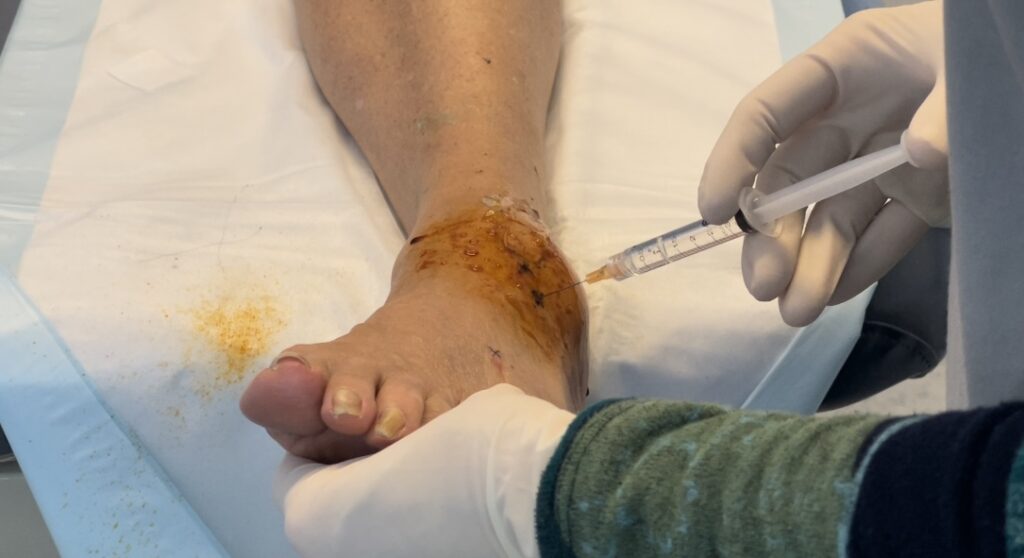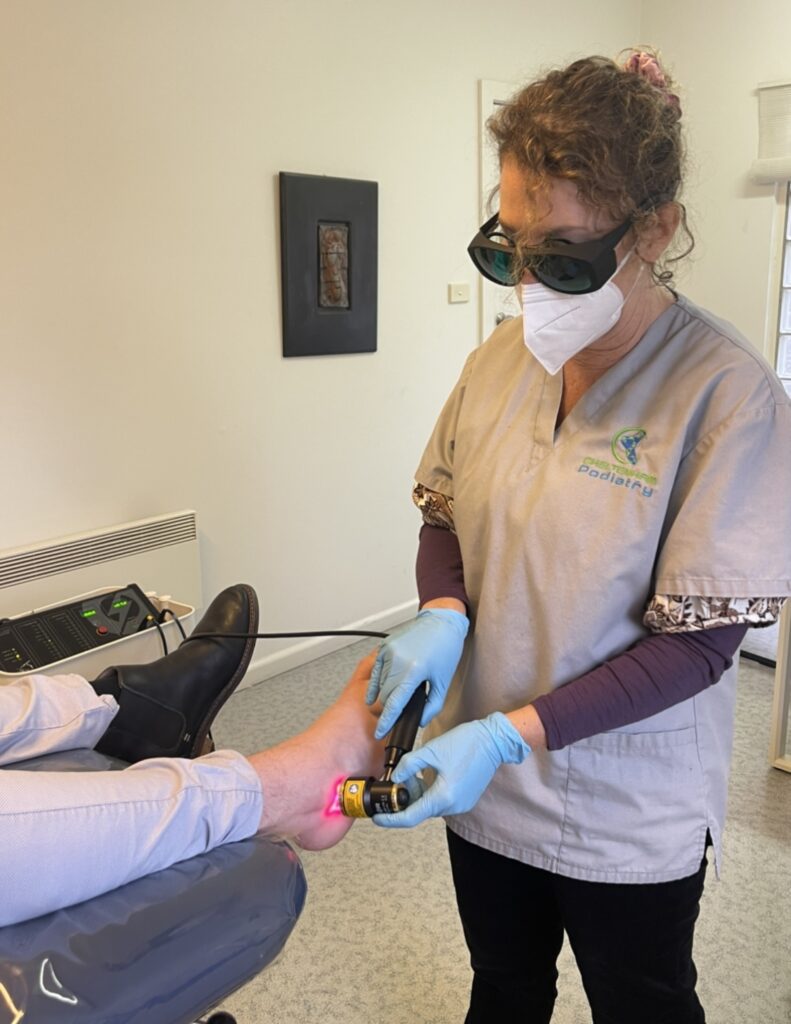Nerve type pain (burning, sharp, tingling ) in the top of the foot and or leg is often due to irritation to the superficial peroneal nerve (superficial fibular nerve). Trauma of the nerve near the knee can lead to foot drop. This is often called an entrapment of the nerve. Nerves are not dissimilar to electrical cables, that branches out through the tissues. In normal conditions, they should be able to glide to a small extent, between structures when the body is in motion. Following trauma to the nerve, such as a knock, severe stretching events, or chronic pressure, the nerve will swell, and often stick to adjacent structures. This prevents gliding ability, and affects the nerve function, causes release of unwanted signals that cause pain. The superficial peroneal nerve is a mixed nerve that carries both sensory information from the front outer side lower leg and the top of the foot, and motor innervation to several muscles as the peroneus longus and brevis muscles.

The superficial peroneal nerve arises just below the knee at the outside of the leg. The nerve runs over bone and then between muscles then runs down the lower leg, and approximately 12 cm above the outer ankle area, it traverses superficially through the muscle. Here it sits just under the skin and a fascia layer and continues its journey toward the outer ankle, splitting into various branches into the top of the foot. Being so close to the skin at the ankle and foot, it has no protection and thus is prone to trauma and activities from the external environment, that can lead to entrapment, and nerve pain.
Causes of Peroneal Nerve Entrapment
- Blunt trauma to the leg/foot during playing sports and other activities, ankle sprains (stretch neuropathy) and bone fractures.
- Surgical procedures in the region of the nerve causing damage, or scarring around the nerve and between the fascia layers
- Tight foot wear, socks

Treatment
Cheltenham Podiatrist are experts in foot and leg nerve entrapments, with extensive training with overseas experts over a 10 year period. Treatment options include nerve stretching, photobiomodulation ( medical grade infra red and red light therapy with LED and Laser Diodes), perineurial injection therapy(using 5% glucose) , and ultrasound guided interventions . These are simple, safe and effective treatments. Treatment often provides accumulative improvement, and usually several sessions are required to resolve the condition, depending on the extent of damage.

On occasions trauma to the nerve at the level of the knee can lead to foot drop, here if treatment is instigated very close to the incident, the foot drop can be resolved.
In many nerve injuries outcomes are improved when treatment occurs close to the traumatic event.
If you think you may have any similar symptoms or concerns, please contact the clinic for an assessment.
Latest News
Ankle Arthritis
Understanding Ankle Arthritis and Regenerative Treatment Options in Podiatry Ankle[…]




